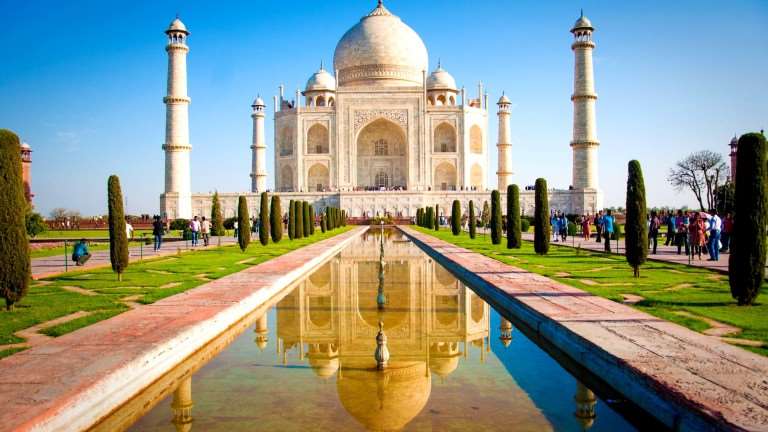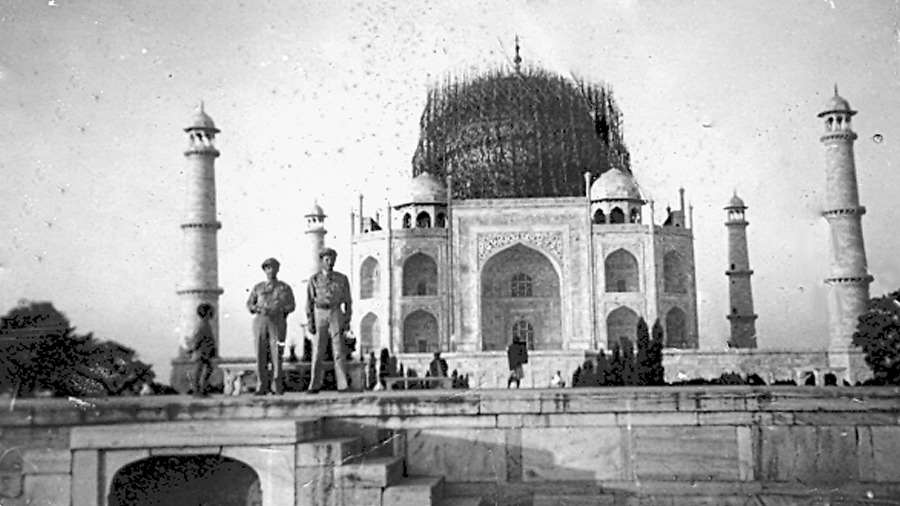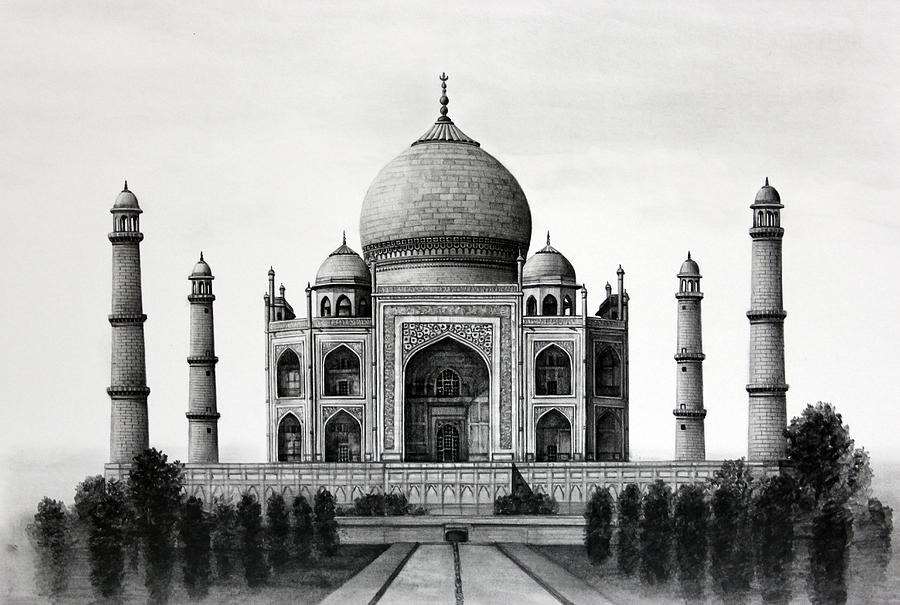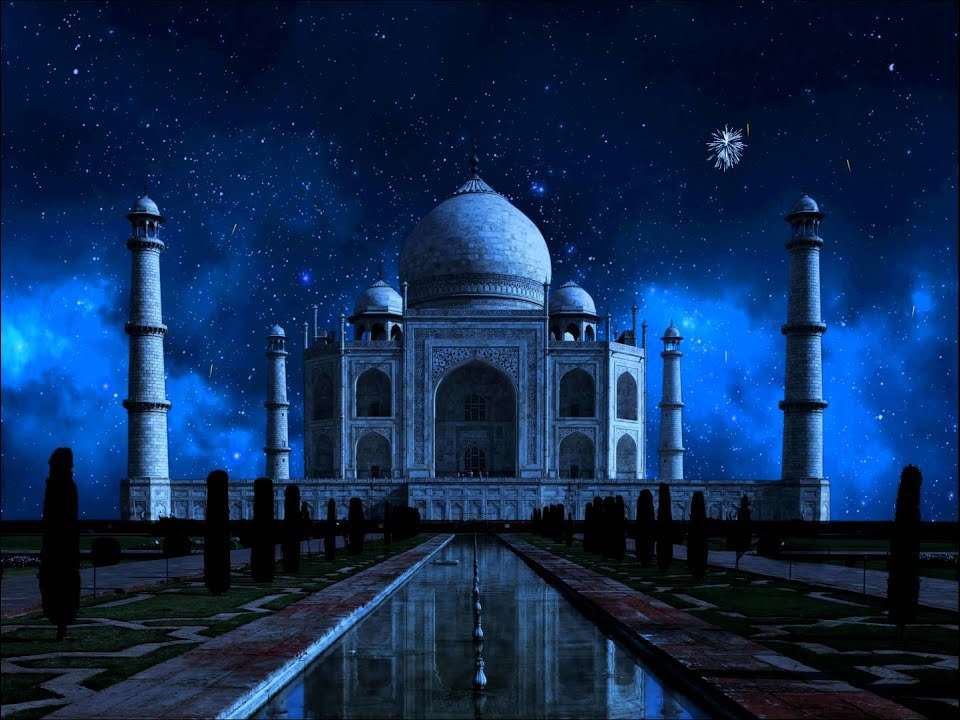What is broadly considered as the most wonderful structure on the planet, Taj Mahal is situated in the city of love that is Agra. It was made by the Mughal Emperor Shah Jahan as a remembrance for his most beloved spouse, Mumtaz Mahal. Developed out of white marbles in the seventeenth century, it is among the best structures of Mughal engineering and considered by the UNESCO as a world heritage site, this landmark is additionally viewed as one of the seven wonders of the advanced world. Consistently guests numbering more than the whole populace of Agra go through the eminent entryways to get a look at this stunning landmark. Shah Jahan said about the Taj that it made “the sun and the moon shed tears from their eyes”.
The Taj Mahal represents the Crown of Palaces in the Persian language. It is situated in Uttar Pradesh, India, yet even the most stunning minds leave guests underprepared for this world miracle. Covering a region of around 42 Acres, the Taj Mahal was built utilizing white marble acquired from Makrana in Rajasthan.

Rabindranath Tagore portrayed it as “a tear in the cheek of forever” while Rudyard Kipling said it is “the epitome of everything unadulterated”. The development of the Taj Mahal started in 1631 and took 17 years before it was finished in 1648! The tomb is spread out in a rectangular shape and can be drawn closer through a huge passage which has a curve and nooks on either side of it. The Taj, so grand from the outside, has similarly marvelous masterful work done in the insides. There are water directs and wellsprings in the passage which makes the landmark significantly progressively breathtaking. The impression of this superb display in the Yamuna is practically beautiful in its flawlessness!
History

The Taj Mahal was created as a love tomb by Shah Jahan for his special highness Mumtaz Mahal, who died while giving birth to their fourteenth child in 1631. Her passing left the emperor totally sorrowful feelings. The development of the Taj started in 1632. The primary structure was finished in eight years, however, the entire complex was not finished until 1653. Not long after the development was finished, Shah Jahan was prisoned by his son Aurangzeb and was detained in the Agra Fort. For an amazing remainder, he could just look at his wondrous creation through a window. Shah Jahan passed on in 1666, after which his remains were placed nearby Mumtaz grave.
More than 20,000 individuals from all over Indian and Central Asia were involved with the making of this striking structure. Pros were brought from as far away as Europe who created the wonderful marble screens and marble trim which is made of thousands of semi valuable stones. Taj Mahal was assigned as a World Heritage Site by UNESCO in 1983. It looks as immaculate today as it was first developed. The landmark experienced a huge reclamation venture in the mid-twentieth century.
Structure plan of Taj Mahal

The Taj Mahal can be entered through east, west and south doors. Inside the grounds, the fancy nurseries are determined to the great Mughal charbagh lines (formal Persian greenhouse). The landmark remains on a raised marble stage at the northern finish of the greenhouse, confronting its back to the Yamuna River. Its raised position is a masterstroke structure as it leaves just the sky as its scenery. Each side of the stage is graced with 40m high white towers. Taj itself is made of semi-translucent white marble, trimmed with a great many semi-valuable stones and cut with blossoms. The four towers of the Taj are in impeccable symmetry, including noteworthy vaulted curves containing pietra dura scrollwork and the citations from the Quran. The entire structure is finished off by four little arches.
The cenotaph of Mumtaz Mahal lies straightforwardly beneath the primary vault. It is an expound false tomb which is encompassed by a rich marble screen trimmed with different sorts of semi-valuable stones, counterbalancing the symmetry of the Taj. The light enters the focal chamber through finely cut marble screens. These tombs are false tombs as the genuine tombs of Mumtaz Mahal, and Shah Jahan lies in a bolted room underneath the principal chamber.
Taj Mahal houses a red sandstone mosque toward the west which is a huge social affair place for the Muslims dwelling in Agra. There is an indistinguishable structure toward the east, the Jawab, which was worked to look after symmetry. Inside the Taj lies the little Taj Museum which houses numerous unique Mughal small scale compositions. Its essential fascination is a couple of seventeenth century ivory pictures of Shah Jahan and Mumtaz Mahal. It additionally has some Caledon plates which are said to part into pieces or change shading if the sustenance served on them contains poison.
Stories surrounding Taj Mahal
There is a well-promoted story that Taj Mahal was a Shiva Temple worked in the twelfth century which was later changed over into the commemoration for Mumtaz Mahal. This hypothesis was created by Purushottam Nagesh Oak. He documented an appeal to have the fixed storm cellar rooms open to demonstrate his hypothesis, yet it was dismissed by the Supreme Court in 2000. Another story is of the well known Black Taj Mahal. Numerous individuals accepted that Shah Jahan intended to manufacture an exact picture of the landmark in dark marble on its contrary side, the work for which started before he was detained by his child Aurangzeb. Broad unearthings were completed at Mehtab Bagh, however no follows were found of any such development.
The acclaimed legend identified with the Taj Mahal is related to the skilled workers who developed it. It is accepted that on the completion of this mega structure, Shah Jahan requested the hands of the venture’s experts to be cut off with the goal that no other structure on the planet could be this delightful. Be that as it may, there is no authentic proof to help this hypothesis.
Visiting Taj Mahal at night

Visiting the Taj Mahal around evening time is accessible on five days on a month, including a full moon night and two evenings when the full moon. Every one of these viewpoints, the dates and the timings for the night review of the Taj are chosen by the Archeological Survey of India. Visiting time for the Taj Mahal during the evening happens between 8:30 PM to 12:30 PM in 8 bunches of around 50 individuals for around 30 minutes each. Subsequently, just 400 individuals are permitted on a solitary night.
While visiting the Taj Mahal during the evening, guests are required to arrive thirty minutes before their booked time at the Shilpagram complex. They aren’t permitted inside the landmark during the evening and can see the Taj Mahal just from somewhat of a separation. All effects and baggage must be saved at a security counter before the night review begins. Camcorders are not permitted inside the landmark during the night seeing.
Timing and Tickets
The Taj Mahal stays open each day from dawn to nightfall. Be that as it may, it is shut each Friday.
The extra charge for the five principle sights of Agra – Taj Mahal, Agra Fort, Akbar’s Tomb, Fatehpur Sikri and Itimad-Ud-Dulah’s Tomb – is comprised of charges from the Archeological Survey of India (ASI) and Agra Development Board (ADA). The passage ticket to Taj Mahal costs INR 750, out of which INR 500 is an extraordinary ADA ticket. It gives you investment funds on the other four sights when visited around the same time. It will spare you INR 50 at Agra Fort and INR 10 each at the other three landmarks. You can purchase this ADA ticket from any of the five sights.
Reaching Taj Mahal
Coming to the Taj Mahal and getting around the city should be possible in tongas, electric transports and rhythms. There are likewise auto-rickshaws and state transports. So as to limit the impacts of contamination on the landmark, vehicles are not permitted in the region of Taj and should be left in the parking garages that are at a short separation from the catacomb. There are non-electric vacationer transports for guests from the parking area.
Taj Mahal and the Agra Fort are very nearby one another, and if it’s not very radiant you can simply stroll between the two. Something else, there are a ton of automobiles and battery-fueled rickshaws utilizing between the two noteworthy landmarks that charge a base sum.

